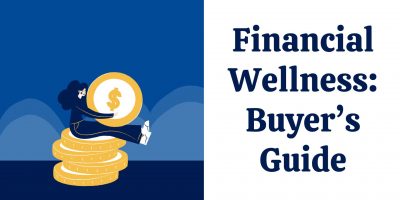
Financial Wellness: Buyer’s Guide
How can employers create and implement a successful financial wellness program? And what does success mean?

Maintaining financial security after retirement depends on timely and effective pension planning. And the 401(k) plan is usually essential in securing an employee’s future. But although it’s a retirement plan, one can cash out a 401(k) while still employed.
Employees can take a portion of this money in urgent or life-altering situations that require immediate financial aid.
However, they’ll lose some of their savings on tax retributions and decrease their overall pension fund. That’s why it’s important to consider all lending options before borrowing from a 401(k).
There are several ways to circumvent penalties and minimize losses. But, for that, the employee must meet the IRS criteria for early withdrawals.
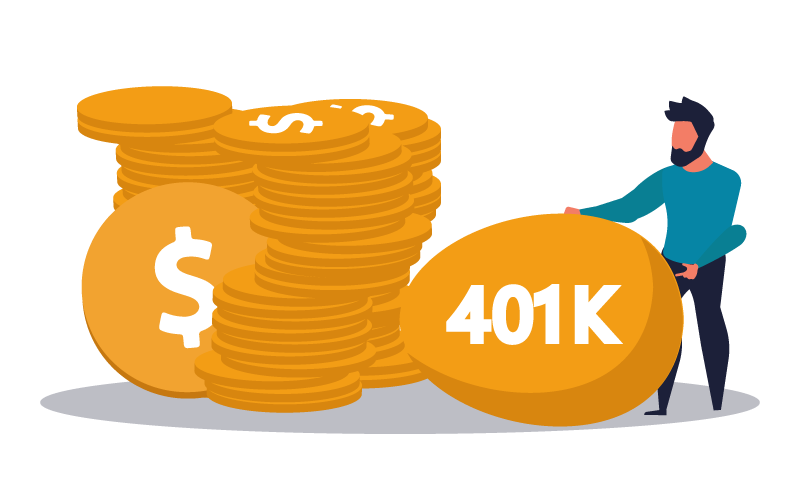
The best time to cash out 401(k) and avoid tax penalties is once the saver reaches retirement age. However, employees can cash out their 401(k) while still working and avoid unnecessary losses.
The company that manages the 401(k), under IRS regulations, can make an exception and allow a penalty-free withdrawal. The plan sponsor determines if and under which conditions one can take out money from the fund.
These are some of the exceptions:
During the COVID-19 pandemic, the U.S. issued the Coronavirus Aid, Relief, and Economic Security (CARES) Act. Its purpose was to alleviate financial difficulties for employees with 401(k)s, which meant getting a temporary tax penalty relief and a pass on withdrawals up to $100,000.
The CARES Act is no longer in motion.
Regardless, employees can cash out their 401(k) early while still employed. And, as much as there are benefits to them, savers should be careful with these disbursements. They mustn’t withdraw money unless necessary and should be cautious to avoid ruining any prospects for future retirement.
It takes years of work to save up sufficient 401(k) funds for a long retirement. Thus, cashing out the nest egg earlier is undoubtedly a big and risky decision.
The good thing for 401(k) savers is that, usually, time is on their side.
Good management can help retirement funds bounce back from financial cuts and protect 401(k) against a stock market crash. But pulling money from 401(k) has its limitations despite the apparent benefit.
So, before opting for this option, one must look at both the pros and the cons.
The main advantage of borrowing from a 401(k) while still employed is there are ways to do it without paying fees. That reduces the losses and gives employees the chance to cover high and unexpected costs.
Taking a small loan against the 401(k) is also suitable for debt management.
Since it’s tax-free, the money ultimately returns to the retirement plan through low-interest payments. That’s convenient for improving the person’s debt-to-income ratio to qualify for consolidation or home equity loans.
Additionally, even if the borrower misses a payment, it won’t damage their credit score because the default doesn’t reach a credit bureau.
Tax retributions are the most significant disadvantage of cashing out a 401(k) before retirement. In fact, owners must pay the IRS a 10% penalty, then list the money they took as earnings and pay income taxes.
Since 401(k)s are crucial for a financially stable future, employees must be careful when and how much money they take out.
The repercussions of a cashout might seem less severe for younger employees who can pick up where they left and still save up enough before retirement. However, even a small loan decreases savers’ earning potential.
They lose money they’d otherwise get from long-term compound interest.
An excellent way to stay financially secure well into old age is to start investing in 401(k) retirement funds as early as possible.
According to federal law, employers must include all workers in their 401(k) program who are over 21 years old and have worked for at least one year in the company. But this rule doesn’t prohibit minors from participating in 401(k). Instead, it’s a way to set up minimum age participation for plan sponsors to let their employees participate.
For the first five years, savers can’t take money from their accounts.
Additionally, between the first 401(k) investment and retirement, cashing out the retirement account usually comes with hefty penalties on top of compulsory taxes.
The IRA retirement age that allows employees to pull money from their 401(k) penalty-free is 59 and a half years. However, there are ways to circumvent that.
As per “Rule of 55”, employees who terminate their job the year they turn 55 can pull out their 401(k) money penalty-free. The rule applies to employees who quit or got fired from their job. For qualified public safety employees, the age is 50.
Finally, the required minimum distribution (RMD) from 401(k) starts at age 72 or no later than April 1 of the year 401(k) owner turns 72. That means pensioners are obliged by law to take money from their retirement fund by the end of each year or lose money on fees.
A 401(k) purpose is to secure money for a safe retirement.
Avoiding early distributions could protect 401(k) funds and ensure they last longer. However, urgent, or unpredictable matters can compel people to withdraw funds before retiring.
The IRS penalizes pulling money from 401(k), but there are exceptions to this rule. The most common practices are hardship withdrawals, 401(k) loans, or a 401(k) to IRA rollover.
According to the IRS, a 401(k)-hardship distribution happens on two conditions. Firstly, the withdrawal should be associated with an employer’s immediate and grave financial distress. Secondly, it should be limited to the amount necessary for that financial need.
A hardship withdrawal is optional, and some companies don’t offer it in their 401(k)s. So, before applying, the employee must check with the HR department to see if it’s an option to pursue.
The IRS considers the following costs for hardships distribution:
An employer that allows withdrawals can include some or all of these in their 401(k) plan.
Employees who apply for any IRS-approved categories must provide evidence of the financial hardship. That way, they can cash out 401(k) while still employed.
A 401(k) loan is like any other, with regular payments, interest, and a payback period. However, the employee borrows and returns the money from their 401(k) plan.
Unlike a hardship withdrawal, one can take 401(k) loans without proving that they have financial difficulty, but only if the plan sponsor allows it.
The 401(k)-loan limit is $50,000 or half of the account balance, whichever is less. So, even if the owner has saved up over $100,000 in their retirement fund, the 401(k) loan can’t reach more than $50,000.
However, there is an exception when the vested amount is significantly lower. Or, when the retirement balance is less than $20,000, the account holder can still take a loan up to $10,000 despite exceeding the 50% limit.
As for the payback period, it’s usually shorter than bank loans or up to five years. But, when the saver uses the money for buying a principal residence, the reimbursement period could reach up to 25 years.
If the employee resigns or loses the job before repaying the debt, the payback period becomes almost immediate. The borrower must return the total amount by the tax-return-filing date for the current tax year. Otherwise, the IRS considers it defaulted and charges an early withdrawal penalty for anyone below the retirement age.
That’s why 401(k) loans might not be the best option for employees planning on switching between jobs, those who are insecure about their long-term employment, and employees nearing retirement.
The 401(k) to IRA rollover happens when employees switch between retirement programs. It usually happens after leaving an employer, but employees can roll over their money while still employed if the company 401(k) allows it.
They can empty their 401(k)-account using an indirect rollover. The plan administrator will give them a check with the funds. Then, employees have 60 days to transfer the money to an IRA. Employees can avoid tax penalties by depositing the check before the due date.
The 401(k) to IRA rollover allows 401(k) owners to borrow this money for a short period and cover immediate expenses without losing savings on early withdrawals.
However, if they fail to repay the total amount on time, the IRS will charge them early distribution fees.
There are two types of 401(k)s, Roth and traditional. The main difference is how they tax the savings.
A Roth 401(k) accumulates funds after-tax. So, when retirees cash out their money, they don’t pay taxes.
The more common, traditional 401(k) plan is tax deferred. Employees don’t pay taxes on their contributions until they make their first withdrawal.
Then, there are different withdrawal fees, including IRA tax penalties, depending on when and how the holder cashes out a 401(k).
Cashing out 401k early in employment or before the age of 59 and a half can result in significant losses in three ways:
If an employee wants to make an early withdrawal of $10,000, they will only get $7,000 after taxes. Yet, the retirement fund would be $10,000 shorter.
There are several ways to circumvent the traditional 401(k) penalty. Some of them include qualifying for hardship withdrawals, taking out loans, IRA rollovers, leaving a job after a certain age, life-changing circumstances, and even overcontributing to the retirement fund.
The account holder can cash out their savings without a penalty tax after retiring.
However, for a traditional 401(k) plan, the holder still must pay income tax on the money. The tax rate will depend on the federal tax bracket at the withdrawal time.
After retirement, the pensioner must watch out for the required minimum distribution, which is obligatory after 72 years. If they don’t take the RMD, the IRS can penalize them by taking 50% of the amount that they didn’t distribute.
Since Roth 401(k)s are post-tax retirement plans, savers don’t pay any withdrawal fees once they retire.
However, employees who cash out their 401(k) early while still employed can face double taxes on an income and penalty basis.
An early Roth 401(k) withdrawal consists of contributions and earnings. Their amount must be proportional to the ratio in the retirement account. So, with an early cashout, the IRS collects income and penalty taxes on the earnings and a 10% penalty fee on the contributions.
Roth 401(k) has the same compulsory RMDs as a traditional retirement plan.
Savings should last long enough to provide a secure retirement. To ensure that, one must carefully manage their finances, including the 401(k).
Before borrowing from their nest egg, employees must consider all other options.
In lack of a better solution, savers can cash out the 401(k) while still employed and use this money to cover expenses. However, they should consult with their plan sponsor and a financial advisor to mitigate losses.
The content in this blog post is for general, informational purposes only and is not meant to constitute legal, tax, accounting, or investment advice. You should consult a qualified legal or tax professional regarding your specific situation.
Browse our curated list of vendors to find the best solution for your needs.
Subscribe to our newsletter for the latest trends, expert tips, and workplace insights!

How can employers create and implement a successful financial wellness program? And what does success mean?
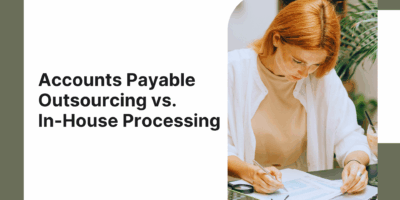
Accounts payable remains heavily manual, consuming time and resources. Could automation or outsourcing to AP specialists be the better way forward?
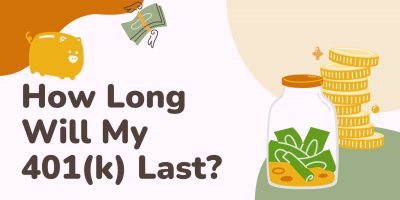
Calculating your savings isn’t easy. Discover how to estimate monthly retirement income and how many years it will last.
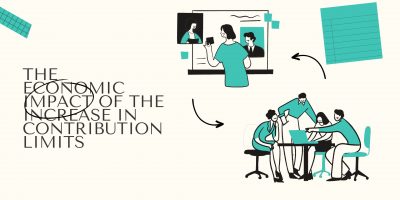
As we anticipate whether the increase in 401(k) contribution limits will carry over into next year, explore how this change impacts employees, employers, and the economy.
Used by most of the top employee benefits consultants in the US, Shortlister is where you can find, research and select HR and benefits vendors for your clients.
Shortlister helps you reach your ideal prospects. Claim your free account to control your message and receive employer, consultant and health plan leads.